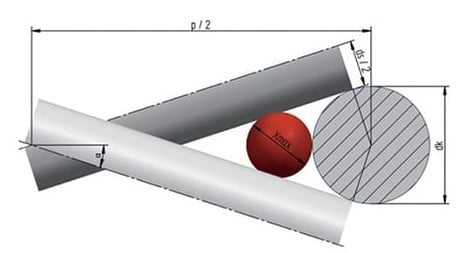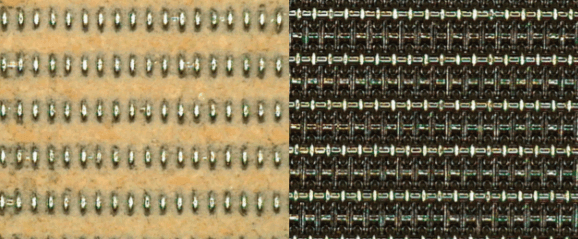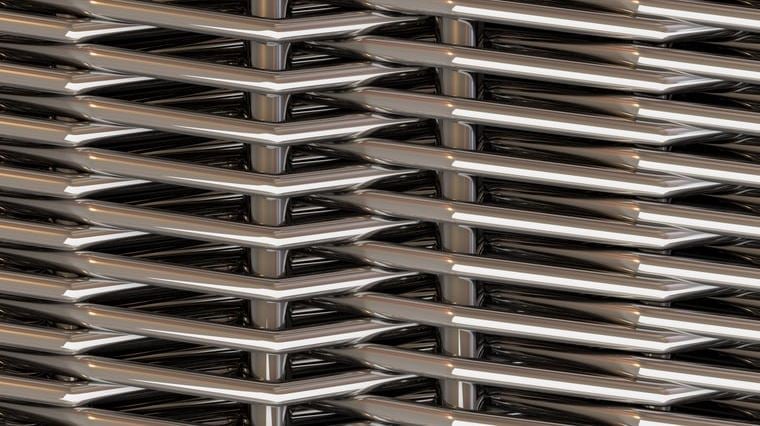Filtration vs Separation: How Does My Process Affect My Wire Mesh?
Filtration and separation. Both are techniques used to process specific elements of a fluid to achieve a desired final product.
As they share many similarities, filtration and separation are often used interchangeably in the world of woven wire mesh. There are, however, key differences that could potentially alter the mesh specifications you are using or think you should be using.
So, what are the differences between filtration and separation, and how do these differences influence the way you use woven wire mesh?
For over 150 years, W.S. Tyler has been driven by the concept that knowledge is power. We strive to educate those that use woven wire mesh so they can make the decisions needed to improve their process.
With that, this article was written to help you better understand how filtration and separation compare so you can make the adjustments needed to boost efficiency. It will cover:
- The definition of filtration
- The definition of separation
- The differences between filtration and separation
- How the differences between filtration and separation affect your mesh specifications
What Is Filtration?

Filtration is best defined as passing a fluid, whether it be a gas or liquid, through filter media in an effort to remove specific particles or unwanted contaminants. Used in a wide range of industries and applications, filtration is primarily used to ensure the overall quality of the fluid meets industry standards and customer expectations.
What Is Separation?

Separation is best defined as the act of dividing the elements of a fluid based on their physical characteristics. In the world of woven wire mesh, this most commonly appears in the form of liquid-solid separation, in which solids are separated from a liquid to form a filter cake.
Read the article below for a more in-depth breakdown of liquid-solid filtration:
Filtration vs. Separation: What’s the Difference?
As stated above, the filtration process relies on the use of a filter media, such as woven wire mesh, to trap particles of a specific particle size range on the surface of the filter. That said, this process is used to purify the fluid.
Rather than purifying the fluid, separation is designed to isolate certain aspects of a fluid, so they can be used to manufacture commercial products. While woven wire mesh filter cloth can be used, various methods, such as chromatography and centrifugation, can be used to separate the components of a fluid.
To put it simply, filtration describes projecting fluid through a filter in an effort to remove particles based on their size. In contrast, separation describes using fluid characteristics, such as particle structure and boiling point, to pinpoint and isolate specific aspects of the fluid.
How Do Filtration and Separation Affect the Mesh Specification I Use?
As with any woven wire mesh application, the mesh specification you choose is critical to the success of both filtration and separation operations. Neglecting to fine-tune your mesh specifications can dramatically affect the efficiency of your system, causing contaminants to pass into the final product or lose material that would otherwise be used to form the filter cake.
As filtration depends on trapping a specific particle size range, the size of the pore of the wire mesh filter is critical. More specifically, you will want a pore size smaller than the particles being filtered while being large enough to facilitate adequate throughput.
To gain insight into establishing the perfect mesh specifications for your material, read the following article:
Achieving such a specification requires you to implement a mesh count and wire diameter that delivers filtration performance. The wire diameter you choose will also dictate how long the wire mesh can withstand the conditions of the application as well as its ability to be cleaned and reused via methods like backflushing.
The same principles apply to separation; however, you must also consider the extraction of the filter cake. Often times this involves scraping the filter cake and removing it from the surface of the wire mesh filter, either by hand or via a mechanical mechanism.
For this reason, you will want to use a weave pattern with a smoother surface where the knuckles at the wire intersections are less intrusive. Not only will this make it easier to retrieve the filter cake from the filter surface, but it will also prolong the lifespan of the tool/mechanism used to do so.
But if you find that a weave pattern with more prominent knuckles at the wire intersections is more suitable for your needs, you can have your mesh calendared. Calendering is the process in which a sheet of wire mesh is fed between two rollers that subject the mesh to tremendous heat and pressure, flattening the knuckles of the mesh.
This leaves you with a mesh solution with a smooth surface that will help facilitate the retrieval of a filter cake.
Pair the Right Weave Pattern With Your To Achieve Optimal Results
Filtration and separation, while similar on paper, are two different processes meant to bring about two different outcomes. Filtration is typically implemented to purify a fluid, whereas separation is implemented to isolate specific elements of a fluid for further processing.
Now that you know how the differences between the two should impact the wire meh specifications you use, you should now be analyzing the various weave patterns available. Each weave pattern offers its own set of benefits, and identifying one that best suits your needs is critical to the throughput and material retention capabilities of your process.
W.S. Tyler has been a prominent leader in the wire mesh industry for over 150 years and is here to support your wire mesh endeavors, essentially serving as the wire mesh department of your organization.
To gain a better understanding of what wire mesh weave patterns are available so you can equip yourself to pinpoint the right one, read the article below:
About Ronnie Brown
Ronnie is the Content Writer for W.S. Tyler and has four years of experience as a professional writer. He strives to expand his knowledge on all things particle analysis and woven wire mesh to leverage his exceptional writing and graphic design skills, creating a one-of-a-kind experience for customers.




